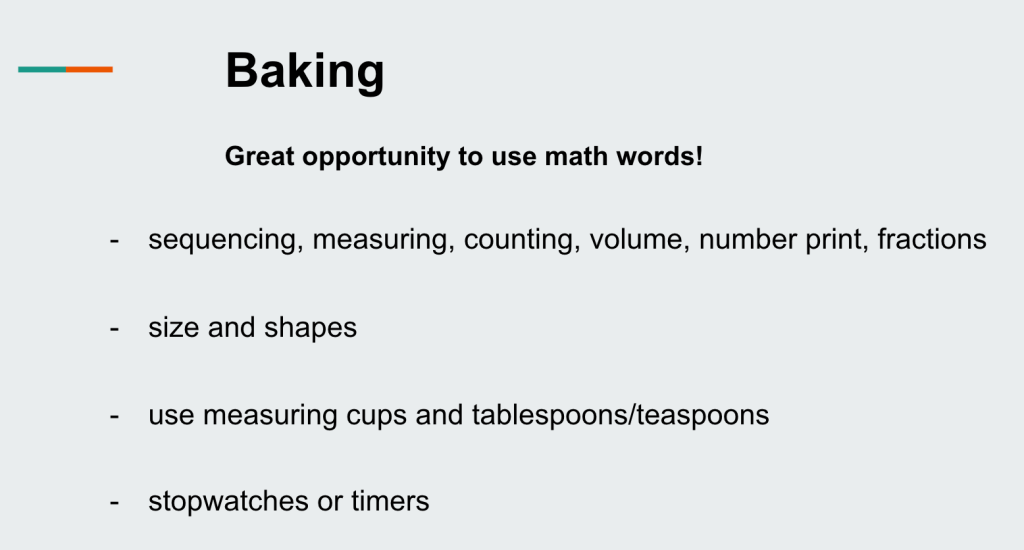Welcome to this training developed for the Family Child Care of Maine’s Professional Learning Committee. In this training, knowledge gained from experiences providing infant/toddler care in family child care settings, as well as professional resources will be shared.
Permission to use likenesses has been obtained for all images depicting children used in this presentation for the purpose of this training only and may not be used otherwise.
Every training starts from a question. That questions leads to information that might answer more questions being asked or just needs to be added to the bigger discussion. This training comes from a question raised by a long time provider who’s program was built on a curriculum for preschool age children, but their community care needs were shifting to more infant/toddler care. They were wondering what an infant/toddler curriculum looked like.
In the discussion that arose, information came forward about research that indicated a child’s math knowledge at the start of kindergarten predicts later academic achievement better than early reading or attention skills. Research shows that even a small increase in math talk, such as asking “Which ball is bigger?” strongly supports overall learning growth. The research shows that even a small increase in math talk, such as asking “Which ball is bigger?” strongly supports overall learning growth. It isn’t about a right answer to a question like this, but rather to encourage a child to begin thinking / developing the ability to problem solve.
“Mathematical knowledge begins during infancy and undergoes extensive development over the first 5 years of life. It is just as natural for young children to think mathematically as it is for them to use language, because “humans are born with a fundamental sense of quantity” (Geary, 1994, p. 1), as well as spatial sense, a propensity to search for patterns, and so forth” (Clements, Sarama, & DiBiase, 2004).
This research brings forward the discussion that “Math” is as important, if not more so, in an early childhood education curriculum than literacy. Yet, so often when providers are talking about infant/toddler curriculum/education the focus is on literacy.
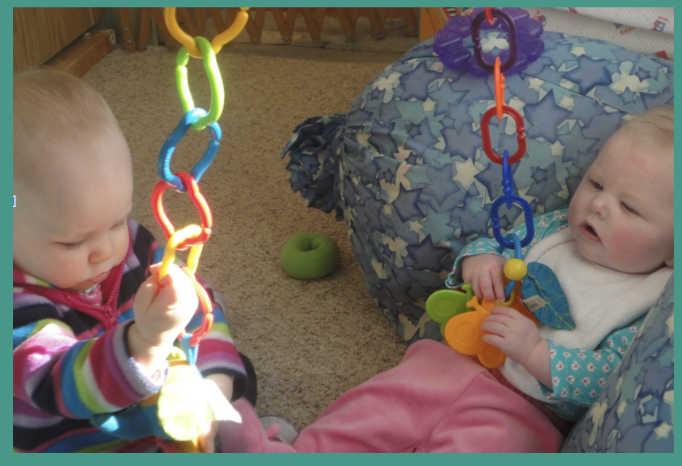
Those that work with infants/toddlers know they are natural explorers. They use their senses to learn about the world around them. Math has a huge presence in that world, children are in the midst of it, and providers need to make the most of the learning opportunities available.
The goals for this training are to:
- Develop an understanding of the role the provider and environment play in offering a quality program that supports development of early math concepts for infants/toddlers.
- Provide information on early math concepts and activities that can provide math learning opportunities for infants/toddlers.
“Infants/Toddlers” covers birth through 3 yrs. old, but most of these math concepts carry easily over into preschool age education.
We know that a caring, responsive and skilled childcare provider and an experience-rich environment is the foundation for a quality program at any age. This can be achieved in many ways and will look different in each program. as our programs are unique in our daily schedules, our environments, the mixture of children and our philosophies.
Quality programs for any age share the following concepts:
- Recognizing social relationships form the foundation for early learning.
- Recognizing that play is the most meaningful context for early learning.
- Creating an environment that provides opportunities for learning to occur.
- Understanding that growth and development depends on the whole child’s physical, social, emotional, and cognitive development.
- Focusing on supporting a strong positive relationship between the child care provider, the child and the child’s parents/legal guardians.
This quote from Mary Jane Maguire-Fong is the starting point for what will be shared in this training, “Observing for cues and then interpreting what it means is where teaching and learning with infants and toddlers begin.”
In child care settings, the term environment comprises more than the physical space. It is important to understand an environment includes the emotional climate of a setting as well as the physical space. Environment includes all the additional materials within the space as well as all the individuals that share the space. Providers need to understand that the whole environment impacts the development of all the children within the space.
Your environment is the primary learning tool for infants and toddlers.
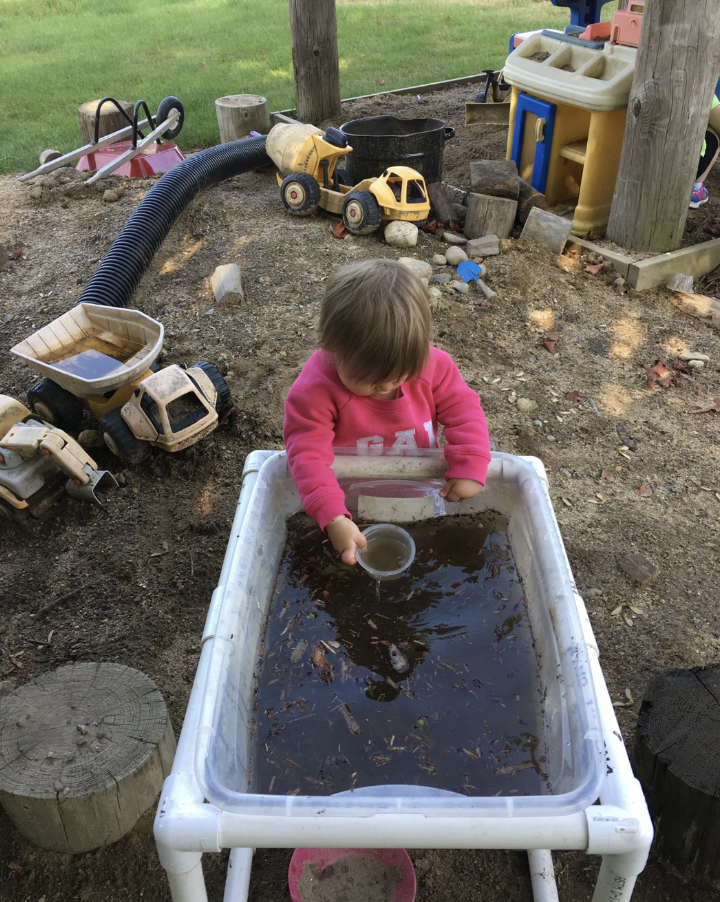
A high-quality environment is built by planning and creating spaces where furnishings are child-sized, toys and materials are easily accessible, have areas that encourage movement and allow for choice. Infants/toddlers learn largely through their senses: Their eyes, ears, nose, hands, and mouth are their tools. They use their bodies to make discoveries. Have safe yet interesting spaces set up around the room that allow for different ages and stages to explore, try out ideas and actions on their own. Have toys and materials provided that allow for open ended play, discovery and learning. Loose parts are an integral part for any age. Be mindful of the safety of materials put out.

Have a selection of materials available throughout the room for infants/toddlers to make their own choices and decide how they will explore and play with, rather than an excess of toys that have a ‘right way’ to play or be used? Use open shelving and keep materials arranged so little hands can easily grab what they need and also see at a glance what is available.
Whether you have provided infant/toddler care for years or are new to caring for this age group, a good place to begin is with a self-assessment of your program’s environment. This assessment is an essential component of the curriculum for infants and toddlers. You need to have an environment in place that promotes relationship-based care between children, caregivers and parents/legal guardians. Such as:
- The environment should include a balance of areas for active and quiet play, including “by myself” spaces for one or two children
- The arrangement of furniture to create play guiding boundaries
- Providing clear, visible order to avoid overstimulation. Having too many choices available at once diminishes a child’s creativity. Less is more.
- All child accessible materials should be age appropriate, clean, and in good repair.
- Remember the adult(s) that will be sharing the environment and include appropriate seating for them.

As you are thinking about your space, you always need to keep safety in the forefront. Infants and toddlers are curious and want to explore – how can you create that opportunity in a safe way? Put yourself down on a small child’s level and move about the space. Do you see ways you could make it more welcoming and accessible for your littlest learners while keeping them safe?
- Baskets of toys on the floor or on low shelving
- Pillows or cushions to sit, stack or climb on
- Low tables for activities or to practice pulling up and standing
- A comfortable low couch or chair that is roomy enough for an adult and a few children to gather
Infants/toddlers do not need a program filled with new and different creative activities every day – they just need safe spaces, both inside and outdoors, for quiet and active play, safe spaces for sleeping, and spaces to interact one-on-one with their caregiver that supports their unique needs. They need toys and activities which are selected to meet those individual interests and abilities. These toys do not need to be “special”. Everyday common works great.
As part of setting up your environment, consider daily care routines. Developing consistent collaborative daily routines that actually include child participation are natural learning opportunities (feeding, toileting, dressing).
Resources:
- Creating a Child Care Environment (Extension Alliance for Better Child Care)Love the first shared idea of viewing your space from the child’s, not adult, point of view. Get down on their level and look around.
- Let’s Talk About Environments (2017) is the fourth installment in the Office of Head Start’s Caring Connections podcast series. This 14-minute podcast explores the message that environments convey to infants and toddlers and how environments affect adult-child
We know a young child’s natural curiosity and interest are held best with material that can be used across a wide range of play possibilities. This type of flexibility supports play being created or child-directed that meets their developmental needs and interests. A simple block can represent a phone, a piece of cake, or be that building block. This training is about bring math forward into the curriculum, so we are not going to go deeper into the environment, but here are some resources you can explore as you wish:
- Age-Appropriate Toy Ideas for Child Care
- Finding Inexpensive Toys for a Child Care Program
- Things to Consider When Choosing Toys and Materials for Child Care
- News You Can Use—Learning at Home and Homelike Environments (February 2011) presents ways to create homelike environments for infants and toddlers and ways to help families discover learning opportunities that exist in their homes.
- Learning Environments
Providers play many roles in creating a high-quality environment, such as:
- Extend learning through introducing new ideas and materials.
- Model prosocial behavior.
- Support children’s problem solving efforts.
- Encourage children to share ideas and experiences
- Engage children in conversation asking open ended questions
- Observe and document children’s development, to share with parents and to help inform curriculum and environment adaptations
The Provider is the most important piece of equipment in supporting a child’s growth and development.
Responsive care is the process of watching and tuning into a child’s cues, thinking about what the cues might mean, and responding to them in a sensitive way. This is recognized as best practice in meeting a child’s physical and mental needs. Responsive care is intentional. The provider has the responsibility of creating intentional learning experiences, documenting the child’s developmental progress, and communicating with parents/legal guardians regularly. An integral part of having a responsive care philosophy is to know and understand the different developments aspects of the children in care.
Infant Toddler Maine Early Learning Developmental Standards (ITMELDS) are a set of guidelines/standards about development and early learning that cover ages birth through 36 months. Knowing children do not all follow the exact same pattern of development, the Infant/Toddler MELDS provide a guideline of the skills infants and toddlers are working on at a given stage. The standards were developed to help individuals understand:
- What to look for as an infant/toddler grows and develops.
- That natural learning patterns and abilities can be nurtured in everyday activities occurring in a home or childcare setting.
- That learning comes from discoveries young children make on their own under the guidance of caring adults.
Maine Roads to Quality Professional Development Network (MRTQ PDN) offers trainings on the ITMELDS to assist you in incorporating the Infant and Toddler Maine Early Learning and Development Standards (Infant and Toddler MELDS) into your practice.
The CDC Milestones are guides for understanding and observing a child‘s development. The Milestones available from the CDC provide developmental information for providers and are a wonderful resource to share with parents/legal guardians.
Highscope COR Advantage with Supporting Maine’s Infants & Toddlers: Guidelines for Learning & Development (2005).
There are other resources on the market that are directed to infant/toddler development and providers should use what works best for themselves and their program. Providers may also benefit from combining different resources, such as using the ITMELDS for their program curriculum and sharing the Milestone resources directly with parents/legal guardians.

Responsive caregiving is especially important during the infant stage. Infants are born seeking interactions with others. They learn to trust with a responsive caregiver. This sense of trust allows them the freedom to explore their world, building their knowledge. Research shows that infants with responsive caregivers, show greater language development and greater levels of peer play as they develop. When adults respond appropriately to an infant’s babbles, facial expressions, and cries, they are building the strong social emotional foundation necessary for healthy brain development.
A responsive caregiver helps guide a child’s discoveries and enhance the learning opportunities. This does not mean that the caregiver is always playing with the children and showing them how to use each item in the environment. It means a primary role of the provider is as an observer. A responsive caregiver thoughtfully sets the stage for play – the children then use the materials in their own varied and creative ways.

Example: Watching the play, the provider sees that a child is beginning to be interested in banging different items. The cues seem to indicate the child is listening to the sounds they can create. The responsive caregiver would add other items to bang on, such as recycled containers, old pots and pans, wood spoons, etc. to the area and watch what the child discovered with the new items.
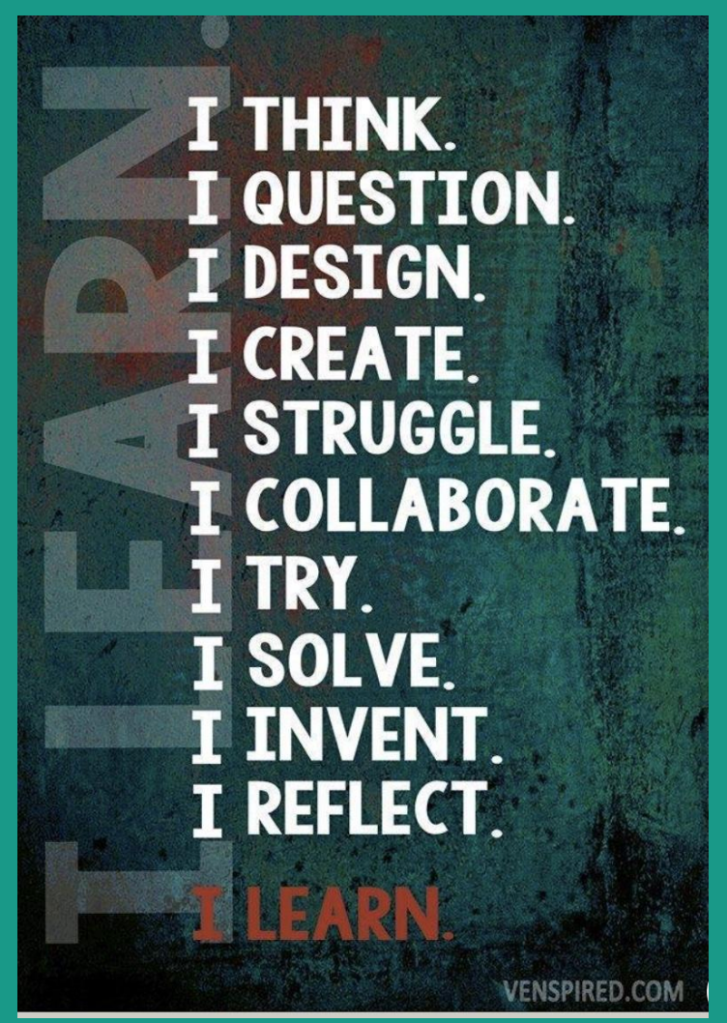
Learning for infants/toddlers isn’t about pulling one topic/concept out, but actually about how concepts interconnect. Seeing, hearing, tasting, touching, and smelling are all important parts of meaningful learning experiences especially for naturally curious and sensory driven infants/toddlers.
A child’s brain undergoes an amazing period of development from birth to three. They are producing more than a million neural connections each second. The development of the brain is influenced by a child’s relationships, experiences and environment.
Infants are born seeking interactions with others. Responding to meet their needs, helps them build the social emotional foundation necessary for healthy brain development.

As an early childhood education and care provider you have the responsibility of providing intentional learning experiences, documenting the child’s developmental progress, and communicating with parents regularly.
We can not stress it enough that the infants/toddlers who have a sense of security explore their world, gaining experiences that build the foundation of learning.
Infants/toddlers need plenty of space to allow the spread of their thought processes as they create and experiment. Having a space where they can make a mess, get busy creating, and express themselves freely is important.
Now let’s get into that idea of bringing Math forward in your work with infants and toddlers.

As adults when someone says “math” most tend to think mostly about numeracy – working with numbers.
What about sorting, patterns, shapes, spatial relationships…….?
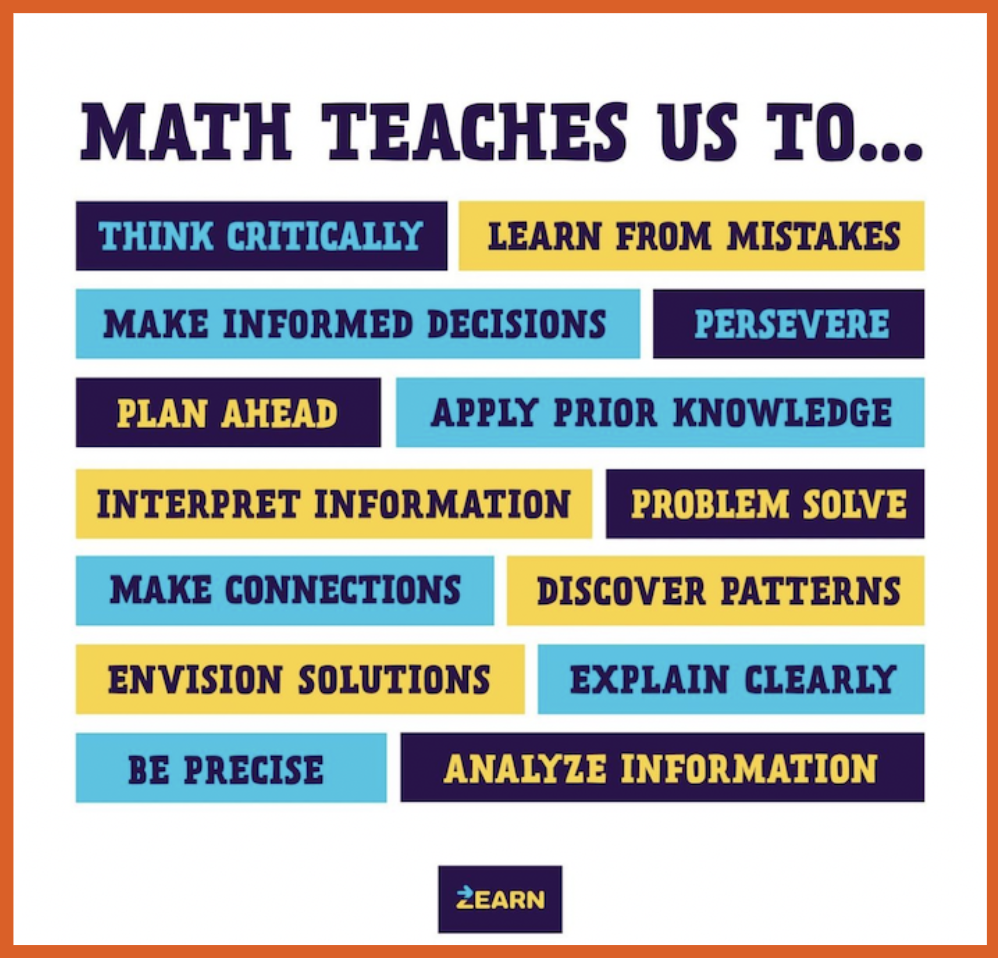
It’s important to understand that for infants/toddlers no area of learning is done in isolation. Everything is interconnected. It comes down to the provider seeing the opportunities to stretch the child’s learning and engage them. We can decide the focus of an opportunity in one direction or another. I encourage you to start thinking about bringing that focus towards early math concepts. Many math concepts are natural events that happen as young children explore their environment.
Teaching math concepts doesn’t require any special tools or equipment. It requires the provider to be aware of what the concepts are and how they are intertwined within the environment.
Math activities for infants while providing the opportunity to learn concepts really revolve around interactive talking. The language you use will become more descriptive as the child develops and also as their concept knowledge grows. Providers need to make an intentional/conscious effort to include basic math in their everyday conversations with I/T. This also naturally strengthens their general language.
Infants/toddlers need many and repeated hands-on opportunities exploring the following concepts to build a solid foundation for future abstract math skills.
1. Counting

2. Spatial Relationships

3. “More” to “Zero“

4. Measurement

5. Sequencing / Patterns / Classifying

6. Block Play

7. Music

8. Baking to Books
